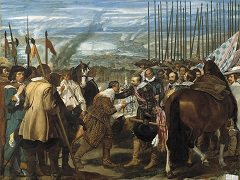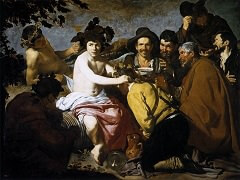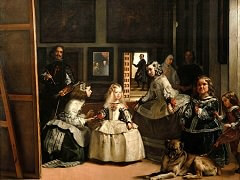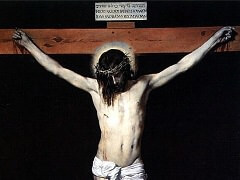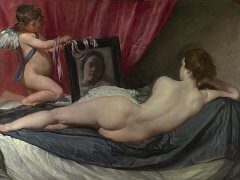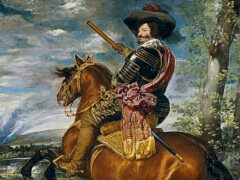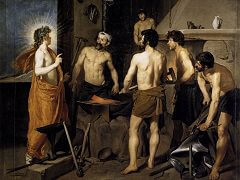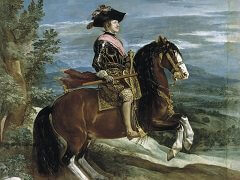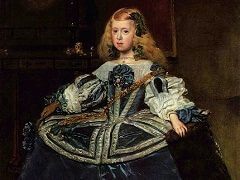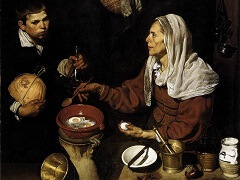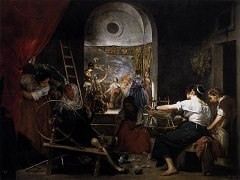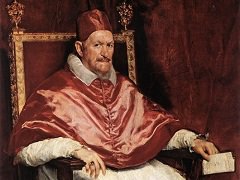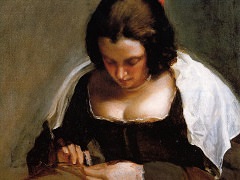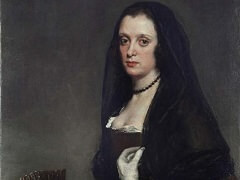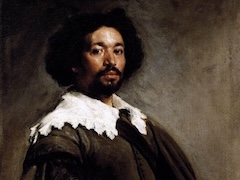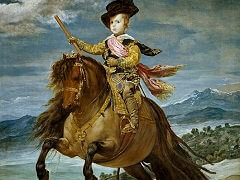Diego Velázquez Biography
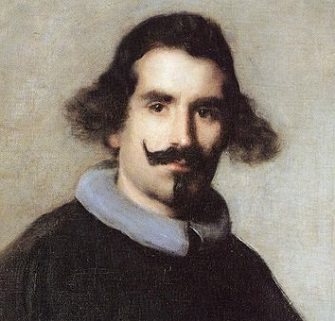
Diego Velázquez was probably Spain's greatest baroque artist. He was born in Seville in 1599. Between the ages of 11 and 16 he worked as an apprentice to the Mannerist painter, Francisco Pacheco. This was where he also gained the influences of Flemish and Italian realism.
For the first few years after he had served his apprenticeship Velázquez's works fell into three categories. These were the bodegón, which comprised everyday subjects combined with still life, portraits and religious scenes. He also showed a strong bias towards naturalism. One of his earliest bodegones was The Meal, which is now on display in the Hermitage in St Petersburg. This may have been his first work as an independent master.
Another of the early bodegones that he produced, the Water Seller of Seville, is on display at Apsley House in London. This is often compared with the work of Caravaggio because it has a very clever use of light and shadow and is a realistic portrayal of nature. Velázquez used the people of Seville as models for his religious paintings and his Adoration of the Magi, now on display in the Prado Museum in Madrid, actually includes portraits of his own family and a self-portrait for the biblical figures. Velázquez moved in the intellectual circles of Seville and was introduced to many of the poets and writers of the time. This was to influence him later in his life when his work adopted more Classical themes. In 1622 he painted a portrait of the great poet Luis de Góngora y Argote which now hangs in the Museum of Fine Arts in Boston.
Velázquez travelled to Madrid in 1623 and painted a portrait of King Philip IV which is now on display in the Prado Museum. After this he was appointed the King's official painter. He spent the majority of the next 6 years painting portraits of the Royal Family. He also painted some mythological pictures including The Drinkers which is also on display in the Prado. His depiction of the people drinking with the God of wine is a good example of how interested Velázquez was in realism but still maintains his mythological theme.
In 1929 Velázquez left for Italy and spent the next two years travelling around the country. During his time there he studied Italian art and current trends. One of the works that he produced on his travels, Joseph and His Brothers, is on display in El Escorial near Madrid. This combines the sculptural style of Michelangelo with the light and shadow techniques of many of the Italian masters.
When Velázquez returned to Madrid he continued as the court painter. He produced many notable works including Prince Baltasar Carlos with a Dwarf which is on display in the Museum of Fine Arts, Boston. He also contributed to the decoration of the throne room in the new royal palace of Buen Retiro alongside some of the most famous painters of the day. His most famous piece is the battle picture The Surrender of Breda. This is now on display in the Prado and is the most celebrated historical composition of Spanish Baroque art. Velázquez continued as court painter and architect until his death in 1660.
Today, alone with El Greco and Goya, Velázquez is considered one of the three greatest painters of Spanish Renaissance. His work has had a lasting influence on the development of modern art. From the first quarter of the nineteenth century, Velázquez's artwork was a model for the realist and impressionist painters, in particular Edouard Manet and Claude Monet. Since that time, famous modern artists, including Vincent van Gogh, Pablo Picasso, and Salvador Dali have paid tribute to Velázquez by recreating several of his most famous works.

